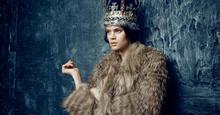Archetypes and Family Dynamics
In the previous series of articles, Growing With Your Archetypes, Kesstan Blandin teaches us about our Allies (three highest scoring archetypes), Treasure Chest (midrange archetypes), and Blind Spot (lowest scoring archetype). Taking the PMAI® (Pearson-Marr Archetype Indicator®) instrument will identify which archetypes fall into each category through the Archetype Profile. The insights that arise can have a deep impact on our personal growth in many areas of our lives. Not only on an individual level, but in our relationships with others. Archetypes are used in advertising, education, and leadership development around the world. I want to highlight another area, not often talked about, and that is the impact of archetypes on family dynamics.
To do so, I will take you on a journey with my family and the world of computer gaming. Let me begin by stating that I am not a computer gamer and when my husband and two boys start talking about it at the dinner table, I am at a complete loss. They may not come to me for gaming advice, but they do seek me out when conflict arises between them when playing the game. I work with psychological assessments in research and development, and the PMAI is one such instrument. As a depth psychologist, and professional facilitator of the PMAI assessment, I use archetype knowledge with my clients on an individual basis. Noting how other facilitators use the assessment with groups, and the success they have in doing so, inspired me to consider archetypes and their impact within my own family. My husband and five (young adult) children volunteered to take the assessment and I conducted individual sessions with each of them. Fully expecting to focus on their individual personal growth, I soon realized the value of an archetypal understanding within the family unit itself.
The three men in my family have a passion for the computer game World of Warcraft (WoW). Learning about their archetypes not only provided personal insight, but it also helped them to understand where and why conflict arises between them when they play the game. What was exciting for me was the realization that their top archetypes also seem to have influenced the roles they choose to play. For those of you familiar with WoW, it will come as no surprise that each character is archetypal in and of itself.
Focusing on the position of the archetypes in their PMAI reports, it is clear how their Allies and Blind Spots support and undermine their game playing. For anonymity I will use their gaming names: husband (Az), my older son (Whink), and my younger son (Luci). Starting with their closest Ally, they all have Caregiver as one of their top three archetypes. This comes as no surprise to me! They are all kind, caring, and nurturing men. Helping others matters to them and they are happy to lend a hand or provide comfort. I see this at home, but I also hear it in the words they use to describe their adventures in WoW and their generosity in supporting the party (players) with each quest.
But what happens when their archetypes don’t align? Az and Luci have the Ruler archetype as an Ally, whereas Whink has Ruler in the Blind Spot. There are times when Whink feels ganged up on by Az and Luci, especially when Ruler kicks in. The Ruler archetype likes to take control, building a structure to achieve goals within a hierarchal system. Ruler enjoys being the boss, keeping order, and willingly takes responsibility while doing so. It will come as no surprise that Az plays the role of a tank; he leads the party into the dungeon, is responsible for strategically planning next steps, and takes the damage for the group to be successful. Clearly, we see leadership through the Ruler archetype, but the Caregiver archetype seems apparent here, too, in his willingness to take damage for the better good. Luci, with the Ruler as the highest scoring archetype, plays the role of DPS (a damage dealer) and sometimes a tank like his dad, directing others and taking on a leadership role. Together with Az, they guide the group through each dungeon. Az and Luci, when stressed, may overuse Ruler and become bossy. With Ruler in the Blind Spot, Whink may avoid taking charge even when asked to do so. Frustrated when Az and Luci bark out orders, rather than step in to lead with authority, Whink is more likely to shut down and become silent, representative of Ruler in the Blind Spot.
Magician is a high scoring archetype for Whink. Magician represents a healer and visionary. Surprise, surprise! Whink is a healer in the game, healing the group to ensure no one dies. The ability to sense interconnectedness between all aspects of the game and long-range visioning is beneficial as a healer and clearly represented by the Magician archetype. As a healer in WoW, with this big picture view, he can help the other players to avoid damage and protect them from incoming attacks unknown to them. Conflict can arise between Whink and Az (where Magician is a low scoring archetype), when Az doesn’t see what Whink sees. For example, certain bosses (a challenging entity) have hidden dynamics that might be easy for the healer/Magician to see, whereas Az with Magician in the Blind Spot may not have that same foresight. In this case, Az may not realize a defensive ability (mitigates incoming damage) could prevent him from taking more damage, requiring Whink to use up more mana (critical healing resources) than necessary, leaving Whink unable to attend to the group’s healing requirements for the rest of the encounter, endangering the remainder of the key (mission) for all. The tank needs constant communication with the healer to ensure the safety of all players, so when Whink goes silent Az is unable to see the hidden dynamics within the game, which is a manifestation of the Magician in the Blind Spot.
Often handling strife within the game through humor, Az and Luci embody their other Ally, the Jester archetype. On the other hand, Jester is a much lower scoring archetype for Whink, so what the others find funny can often set off and anger Whink! If it doesn’t anger him, it certainly leaves him dazed and confused as to whether they are joking or not!
Their archetypes not only affect the roles they choose to play, but also in the naming and choice of their avatars. The names my husband and younger son chose for their characters, Az (Azrael) and Luci (Lucifer), represent archangels, which are the “rulers” of angels in the hierarchy of angels. Their main avatars are a Holy Knight (a classic leader with all its pageantry) and a Rogue (a dynamic, complicated character that relies on skill, stealth, risk taking, and finding solutions to achieve goals), respectively. Both avatars seem to embody the Ruler archetype! As for Whink, the main avatar he chooses to play is a Shaman who casts spells and heals – Magician archetype undeniably!
How has archetypal awareness built better relationships between them in their world of gaming? For Luci, “It helps me understand why I gravitate to leadership roles in WoW and to realize how I might affect others, like with my brother Whink.” Az says, “As a tank in the game, I like controlling the fights which makes sense with Ruler being one of my top archetypes. However, rather than dominate, I prefer to facilitate what each of the other players are good at, encouraging the boys to spread their wings more. Under periods of stress I can be too direct, which tends to hurt feelings, so I am learning that I need to be cautious in overusing the Ruler archetype.” Servant leader, a Ruler archetype characteristic, rings true here when Az describes helping the boys “spread their wings.” Lastly, in Whink’s words, “The Magician archetype reminds me why I choose to heal for our group. I’m there to support and keep our team alive, which brings me joy when I play the game. I can see things they may not. I am learning that communication is more important than ever and rather than shut down, I need to embrace my Ruler archetype and with authority speak up and take charge through sharing my foresight with the team.”
All in all, Az, Whink, and Luci appreciated learning about their archetypes, not only in validation of who they are, but also in gaining a greater understanding of each other. As for playing WoW, dad and the boys all agree that “Greater awareness has helped us become a better team, supporting one another to reach our goals efficiently. Not only as our characters, as Keystone Masters, but in our personal relationships, too!” Unanimously, we agree that learning about your archetypes can bring clarity, insight, and awareness, not only through gaming, but to a comprehensive understanding of family dynamics overall. WoW and wow!











_thumb.png)







_thumb.png)
_thumb.png)
_thumb.png)
_thumb.png)
_thumb.png)
_thumb.png)

